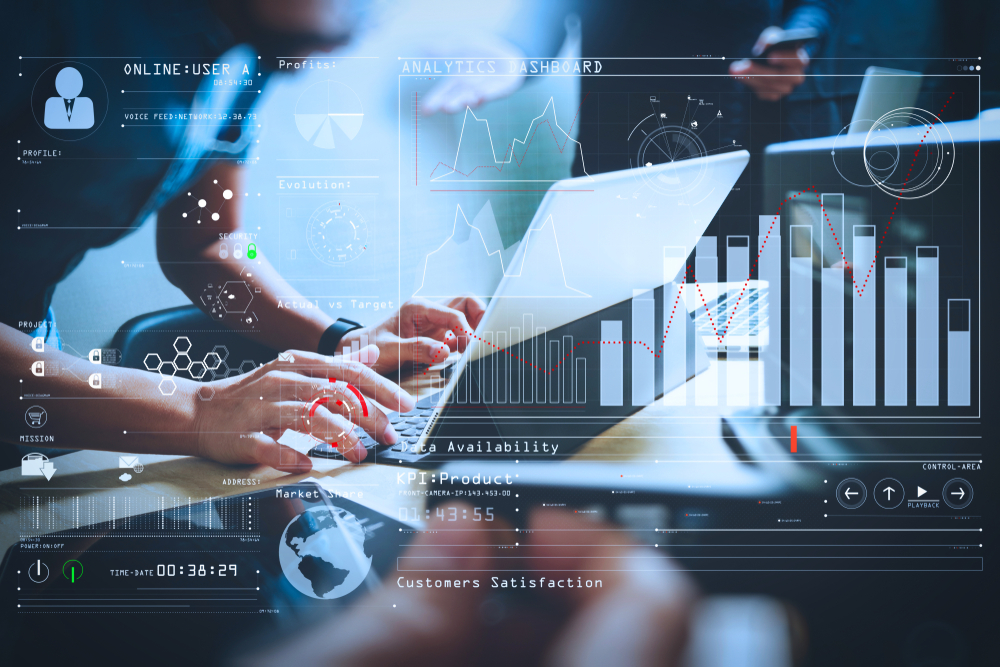It is no secret that Artificial Intelligence (AI) has deeply instilled itself into our society. From completing our sentences through automated suggestions to drone-delivered packages from Amazon, AI has exhibited its revolutionary, innovative potential for helping to maximize efficiency in several areas of our lives. In our recent blog, we explored fundamental AI innovations across several industries, but what are the technologies behind these outcomes?
This blog covers some technologies used to pave the way for AI solutions helping businesses deliver better customer experiences and maximize profits. Let’s dive into it.
Robotic Process Automation (RPA)
Robotic Process Automation (RPA) is helping organizations across multiple industries ranging from financial services to healthcare, manufacturing, retail, and more, to streamline workflows, making them more profitable, flexible, and responsive. Instead of people, software robots do redundant work like moving files and folders, logging into applications and systems, extracting, copying, and inserting data, completing routine analyses and reports, and filling forms. Advanced robots can even perform cognitive processes like interpreting text, engaging in conversations, understanding unstructured data, and applying advanced machine learning models to make complex decisions.
RPA has been around for a long time and is increasingly popular in the world of AI technologies, with Gartner predicting that 90% of large global organizations will have adopted RPA by 2022, and large organizations will triple the capacity of their existing RPA portfolios through 2024. It’s no doubt that when robots perform repetitive, high-volume tasks, humans are free to focus on the things they do best and enjoy more: innovating, collaborating, creating, and interacting with customers, increasing employee satisfaction, engagement, and productivity.
Knowledge Graphs
Knowledge graphs are a compelling way to structure your information database. They are fast becoming an integral part of organizations’ data landscapes as they provide a human and machine-readable database of all the things of interest to the enterprise in their domain. Fueled by machine learning, knowledge graphs utilize natural language processing (NLP) to automatically connect a single metadata allocation on one piece of information to other information with varying contexts, even when it’s several logical steps from the original piece of metadata.
While consumer-facing products demonstrate its ability to save time, Knowledge Graphs can also be applied in a business setting, eliminating manual data collection to support business decision-making. Knowledge Graphs are not new; they’ve been generating impact for over a decade across several types of businesses, including Google, which uses its Knowledge Graph, a database of billions of facts about people, places, and things, to populate search results. Another example is the Amazon Product Graph used to categorize and showcase products to customers as they search.
Customer Segmentation
Accurate segmentation brings several benefits to a business, including precise budgeting and planning for marketing campaigns, strategic product design, tailored promotion campaigns, and improved customer satisfaction. When you add AI to data analytics, your customer targeting becomes more accurate, dynamic, and capable of boosting conversions.
Powered with machine/deep (ML/DL) learning algorithms, you can thoroughly analyze customer data and generate in-depth results about the targeted segments. You can also use this information to automate personalized campaigns for each group. This approach will yield superior results compared to traditional analytics-driven marketing campaigns. For example, custom AI solutions can eliminate human bias when analyzing data and identify hidden trends and patterns you never thought of before. Businesses also benefit from automatic segment updates that help accurately reflect changes in the marketplace.
There are two types of machine learning-based customer segmentation – supervised and unsupervised.
In the case of supervised ML, the marketer sets the rules first, and ML is used to sort the data based on those rules. For example, you can select options to sort customers by the number of products ordered, average profitability, or average cost.
With unsupervised ML, the algorithm finds different “clusters” based on customer similarities, which may not be evident initially. These clusters tend to be very small, so marketers can better identify specific customer groups, providing more personalized offerings and better targeting. For instance, unsupervised machine learning can recognize the most targeted customer cluster, like those who ordered the most products, spent the most money, or never returned to the site.
Text Mining
Text mining transforms unstructured text into structured data to identify meaningful patterns and new insights. For businesses, the large amount of data generated every day represents both an opportunity and a challenge. On one side, data helps companies get intelligent insights into people’s opinions about a product or service. Think about all the potential ideas you could get from analyzing emails, social media posts, product reviews, customer feedback, support tickets, etc. On the other side, there’s the dilemma of how to process all this data. And that’s where text mining plays a significant role.
Using NLP, text mining enables multiple practical applications to take your business to the next level, including recommending relevant complementary products, fighting cyber fraud, improving personalization, and augmenting the chances of future conversion. Another use case we’ve seen is organizations using text mining to optimize the end-to-end customer support process, from automating ticket tagging to routing tickets to the relevant support staff, detecting urgency, and analyzing tickets for customer satisfaction.
Overall, text mining is helping companies become more productive, better understand their customers, and use insights to make data-driven decisions.
Predictive Analysis
Predictive analysis is a statistical technique leveraging machine learning and data mining of historical and existing data to predict likely future outcomes. It works by analyzing current and historical data and projecting what it learns on a model generated to forecast potential outcomes. Predictive analysis can help predict varying things, from TV ratings and a customer’s next purchase to credit risks and corporate earnings.
Pairing predictive analytics models with AI is crucial in improving forecast accuracy and helping businesses realize a full range of benefits, including inventory optimization, improved delivery times, increased sales, and reduced operational costs. AI is expected to grow to a USD 309 billion industry by 2026, and 44% of executives report decreased operational costs as a direct result of implementing AI.
Inventory management and delivery optimization are key ways businesses leverage predictive analysis, especially in retail industries.
In Conclusion
Deploying the right AI technology or combination of technologies enables businesses to save time and money by automating and optimizing routine processes and tasks, increases productivity and operational efficiency, and helps leaders make faster and better business decisions.
Check out our recent guide to AI technologies, where we explore several AI innovations and go deeper to provide an enterprise-ready ranking of these technologies to drive your adoption strategy.
You can also explore how Wizeline’s Intelligence Everywhere offering helps businesses mature their data-driven capabilities by building next-generation data platforms and enabling machine learning and automation or contact us at consulting@wizeline.com to get started.





